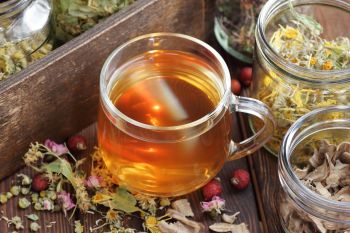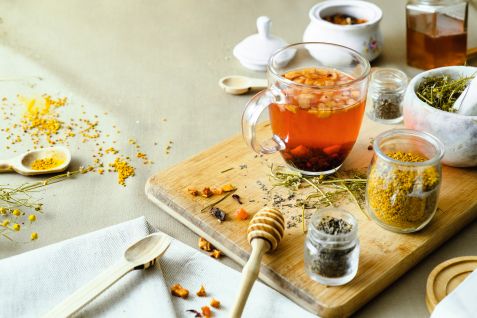Tea is a beverage that has been consumed for centuries. The Chinese have long been known to be the tea drinking people. As with many other cultures, the Chinese were the first to discover the health benefits of tea. It is still popular in China and other Asian countries. There are many types of tea that are available.
The most common types of tea are black, green, oolong, white and herbal. Tea is made from the leaves of plants. The plants used to make tea come from all over the world but most commonly they come from China and India.
If you are interested in making your own tea, you can find instructions on how to do so in this article. In addition, you will learn about the different types of tisane tea and what they are used for.
What is Tisane Tea?
Tisanes can be made with plants that are not camellia sinensis, such as an herb or a flower. Some tisane beverages use parts that are not present in traditional teas like flowers or roots to taste good. You can easily grow plants in your backyard and enjoy drinking hot, delicious tea from them. It may be that you are smelling the tea aroma as you mug a hot tea, and you are rubbing your hands on the edge of your teacup to help you enjoy the warm sensation.
Herbs have long been used to treat ailments simply because they taste delicious. It has been proven that tisanes were sips in the long-agone civilizations of China and Egypt. Tisanes contain very little caffeine and are delicious when sipped hot or cold. Cultures across the globe have used tisanes to help them heal themselves, thanks to the nutrients and antioxidants that tisanes have.
Difference Between Tisane and Regular Tea
Most teas are made with leaves that are harvested directly or indirectly in the tea plant. Teas made with other plants are called tisanes. They can be made with anything that you like. They can be made with any fruit, flower, spice, or herb. There are lots of tea blends available, and they all provide unique flavors and health benefits. Tisane blend teas are great for a variety of ailments, including bloating, stomachaches, and inflammation.
Unlike teas that come from tea plants, tisane teas aren’t caffeine-laden, so you can enjoy a softer, more relaxing experience. Tisanes and other herbal teas are regarded as a fun and easy introduction to the many benefits that tea has.
Herbs that are combined with water and other ingredients to create tasty drinks are called tisanes. If you put some of the beneficial herbs in a small bowl or other container and add some hot water to it, you can get the health benefits from drinking the concoction. It is important to do your own research about the health benefits of every herb before you start drinking it.

Different Types of Tisane
Some of the most common types of tisanes include the following:
- Fruit tisanes. Fruit tea is a sweet drink containing natural sugars and herbs, and it is typically prepared with a hibiscus base. Almost any edible leaf or vegetable or even some fruits and berries are good for making teas. It is common to use fresh or frozen fruits, as well as spices and sweeteners such as vanilla and cocoa.
When you mix fruits with tea, the sweetness and acidity from the rind of a fresh or dried fruit such as lime or lime peel will naturally come from the tea. When you’re making your own tea, mix fresh fruits with fresh herbs to create a refreshing beverage.
- Leaf tisanes. Tisanes made from leaves such as lemon verbena and peppermint or chamomile and echinacea are very popular. Tisanes from plants like dalmatian and chamomilla were widely appreciated by the Egyptians as they were thought to have beneficial effects on the body. Mint tea has traditionally had relaxing properties. When brewing tea from leaves, be sure to bring the water just to the point where it will begin to boil, instead of bringing it to the perfect boil.
- Whole grain tisanes. Toasting grains can give them a pleasant aroma, and the oil that they release while toasting them gives them a slightly sweet, earthy flavor. Tisanes made from boiling barley grains are very popular in southern Mexico. They are usually sweetened with sugar or lemon juice to suit the tastes of the drink. Be careful when you heat up grains to alight the flames, so they can absorb the oils from the cooking process.
- Flower tisanes. Flowers and spices such as rosemary and thyme are common ingredients in flower teas. This includes tea made with fresh herbs and spices that smell strongly of flowers and green leaves, but not like perfume. It is best to use leaves that are more flavorful than white tea, because the resulting aroma of a good tea infusion is soothing.
How Do You Make Tisane Tea?
If you want to brew some tea, you’d need a few dried herbs and some water to bring the flavors to a simmer. Let it sit for a few minutes. Use ingredients that are as fresh as you can to get the most of the beneficial oils. Toast grains (or toast their skins) for some added flavor. If tea bags aren’t convenient, you may want to use resealable tea bags or a tea filter to filter the tea.
Brew time for different types of teas varies significantly, depending on what the manufacturer specifies. It could take as few as 2 minutes to make a cup of tea, or it could take as many as 14 minutes. Most tea vendors have instructions for how to brew each type of tea that you buy.
If the package of the particular type of organic loose leaf or loose leaf that you have has brewing directions, follow those instructions and set the timer according to how long you think you will need to steep the brew. If you do not receive instructions with every tea-making product, ask the supplier of the product you are buying or try searching on the web for instructions on how to prepare the tea.


